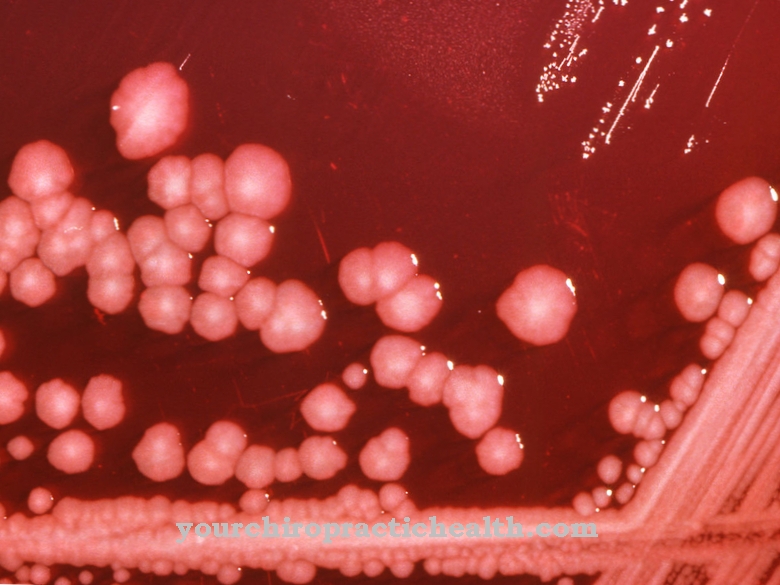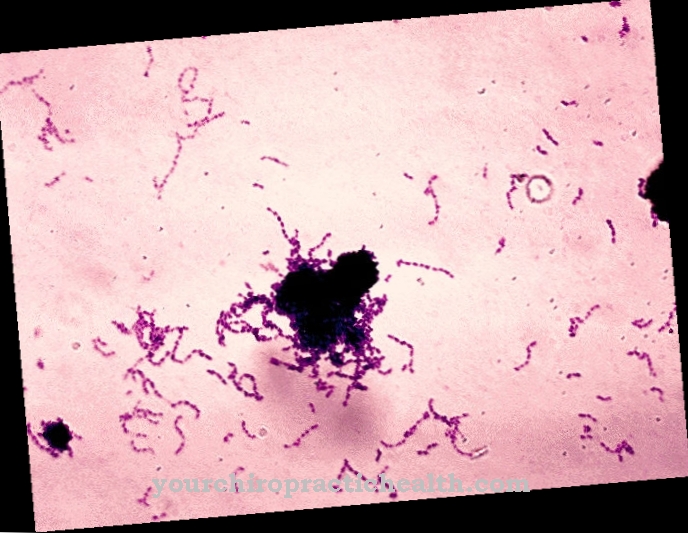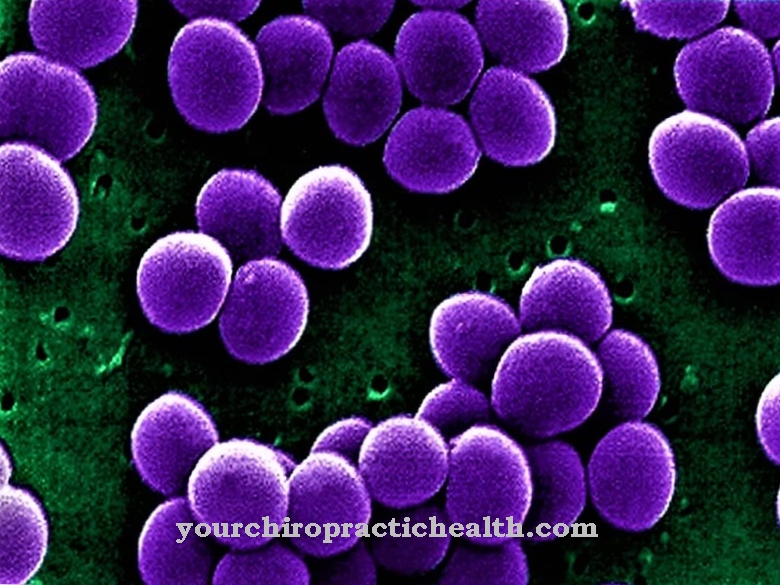The germ Bordetella parapertussis belongs to the genus Bordetella and is difficult to distinguish from the related germ Bordetella pertussis.
What is Bordetella parapertussis?
The bacterium Bordetella parapertussis owes its name to the genetic and biochemical similarity with the related germ Bordetella pertussis. The generic name Bordetella was used in memory of the microbiologist Jules Bordet.
The germ has a short and cocoon-shaped rod shape. It is around 400 nanometers wide and 800 nanometers long and cannot move (not motile). It is gram-negative and therefore only has a murein shell with an overlying lipid layer.
Bordetella parapertussis has an aerobic metabolism and is incapable of replication without oxygen. The metabolism of the germ is based on breathing.
Pili, which are also called fimbriae, are deposited on the bacterial shell. Pili are burr-like branches that enable the bacterium to adhere to various surfaces. Endospores are not formed by the germ. Transmission only takes place via the droplet infection by means of secretions ejected when coughing.
For the structure of the cell's own substances and as an energy source, amino acids are required, which are obtained through a chemoorganotrophic specialization. Citrates and puyruvates can also be included. The germ cannot utilize sugar and is therefore asaccharolytic. Sodium chloride and bile salt are tolerated by the germ in small quantities.
Enriching the culture media with 3% sodium chloride shows no effect on the replication of the pathogen. Higher values can block auto-replication. A bile salt content of up to 10% is easily tolerated. A value of 40% blocks replication completely.
A complete sequencing of the genome of the species Bordetella parapertussis was carried out in 2003. A strain isolated from a child in 1993 was used for this. At 4774 kilobase pairs, the size of the genome is roughly comparable to the size of the genome of the bacterial species Escherichia coli. Sequencing of two more strains was carried out up to 2013. In the case of strain Bpp5, which was isolated from a sheep, a plasmid with an unknown usefulness in the germ could be identified for the first time.
Occurrence, Distribution & Properties
Bordetella parapertussis only settles on the epithelial cells of the respiratory tract. This is the tract that houses the airways and thus enables oxygen uptake.
The bacterium can only develop new hosts via the droplet infection.
For the metabolism of the germ, which is based on aerobic processes, the optimal conditions are created in the oxygen-rich respiratory tract.
You can find your medication here
➔ Medicines against coughs and coldsIllnesses & ailments
Bordetella parapertussis and Bordetella pertussis are typical triggers of whooping cough. The germs trigger a moderate form of whooping cough and are responsible for 5-20% of the cases registered annually. The possibility of a really serious illness with fatal consequences exists in children up to the age of six. Due to the high risk of infection, mandatory notification of the disease was introduced in 2013.
The classic whooping cough is divided into three stages, but infected people of all ages can also develop atypical and persistent courses. After an incubation period of about 7-14 days, the catarrhal stage sets in. It is characterized by flu-like symptoms, a slight fever and an unproductive, dry cough. The catarrhal stage lasts about two weeks, and infection via a droplet infection is most likely here.
In the second stage, the convulsive stage, the typical symptoms of whooping cough appear. Coughing attacks in close succession with a deep slimy tone, often with sticking out tongue and glassy expectoration, are present. There are also gag stimuli that can lead to vomiting.
After the coughing attack, there is often a strong lungs that can be heard in a reduced form during normal breathing of the infected person. The convulsive stage is the longest stage of whooping cough and can last from two to six weeks.
The third stage, the stage decrementi, describes the slow resolution of the disease. The coughing attacks decrease and the deep and slimy tone decreases. Overall, it is much easier for the sick person to cough. Gag stimuli and slimy expectoration no longer occur to the same extent and the overall appearance of the disease slowly flattens out.
Since the lipopolysaccharides typical of gram-negative germs are stored on the cell wall and generate antibodies, an infection can be traced via these antibodies. A differentiation between the species Bordetella pertussis, Bordetella parapertussis and Bordetella bronchiseptica can also take place through the antibodies, since the lipopolysaccharides (LPS) of the individual species differ.
Other antigens (antibody generators) are the proteins of the outer membrane and the fimbriae. The proteins trigger agglutination (clumping) when they come into contact with the corresponding antibodies.
A biochemical differentiation of the germs relevant to human medicine is difficult. However, by finding the corresponding immunoglobulins (antibodies) serologically, it is possible to identify the exact type of Bordetella germ. Unfortunately, this differentiation is not possible in the early stages of the infection, since no corresponding antibodies are formed here.
A further complicating factor is that active immunoglobulins can be confused with immunoglobulins from a previous infection or vaccination. An uncertain diagnosis can be remedied by a subsequent polymerase chain reaction (PCR). For this purpose, gene segments that are present in smears from the patient are duplicated. These can then provide confirmation of the suspicion.
Another problem of Bordetella germs in PCR is the genetic similarity of parapertussis and pertussis. Gene sequences that are characteristic of the individual bacterial strains are very difficult to identify. Further investigation methods to improve the PCR, such as fluorescent light to better identify the gene sequences, are part of modern research.
Increased titer values in combination with a positive PCR test offer at least a very high probability that it is the detected Bordetella species.

.jpg)























.jpg)


